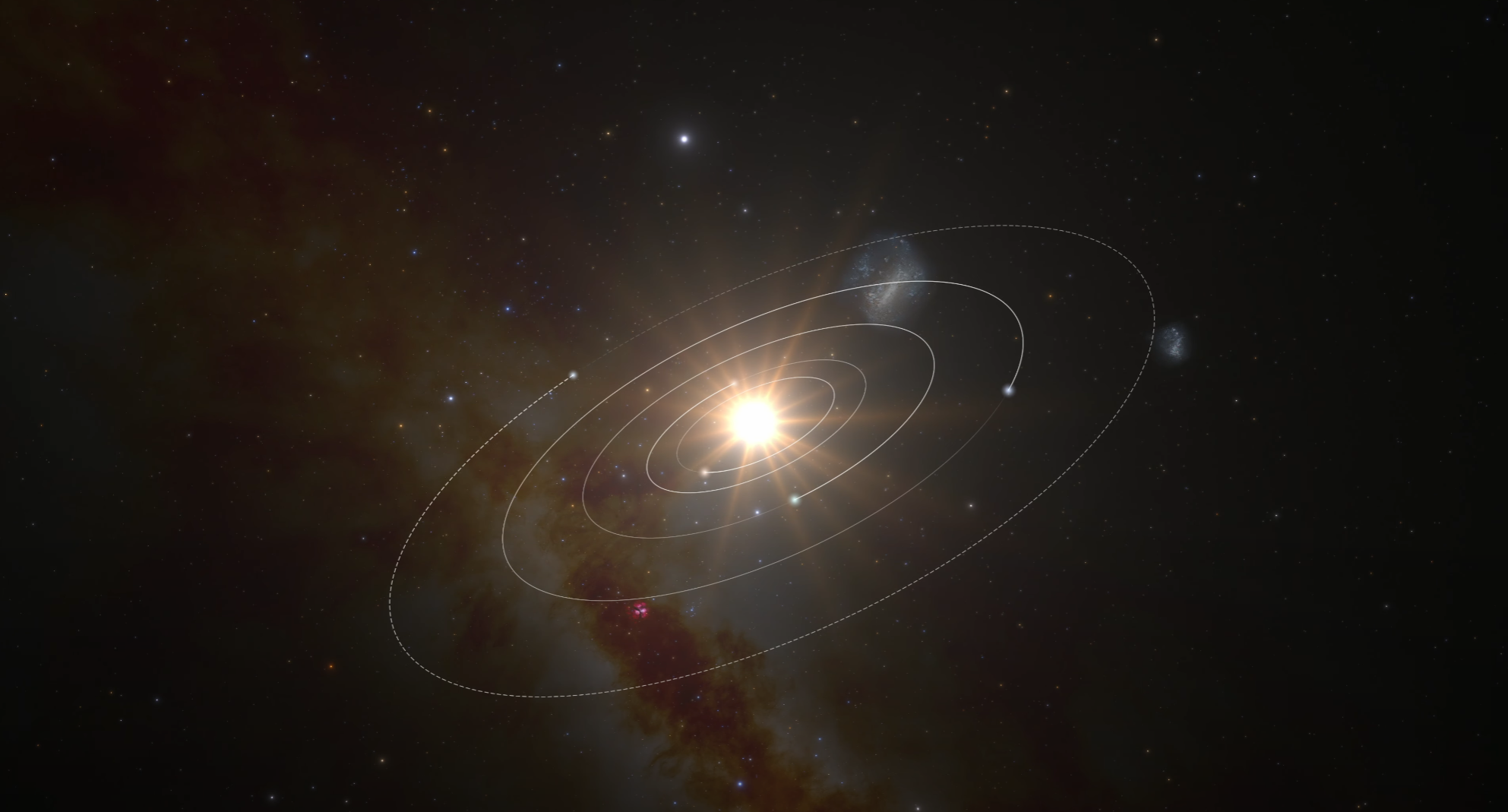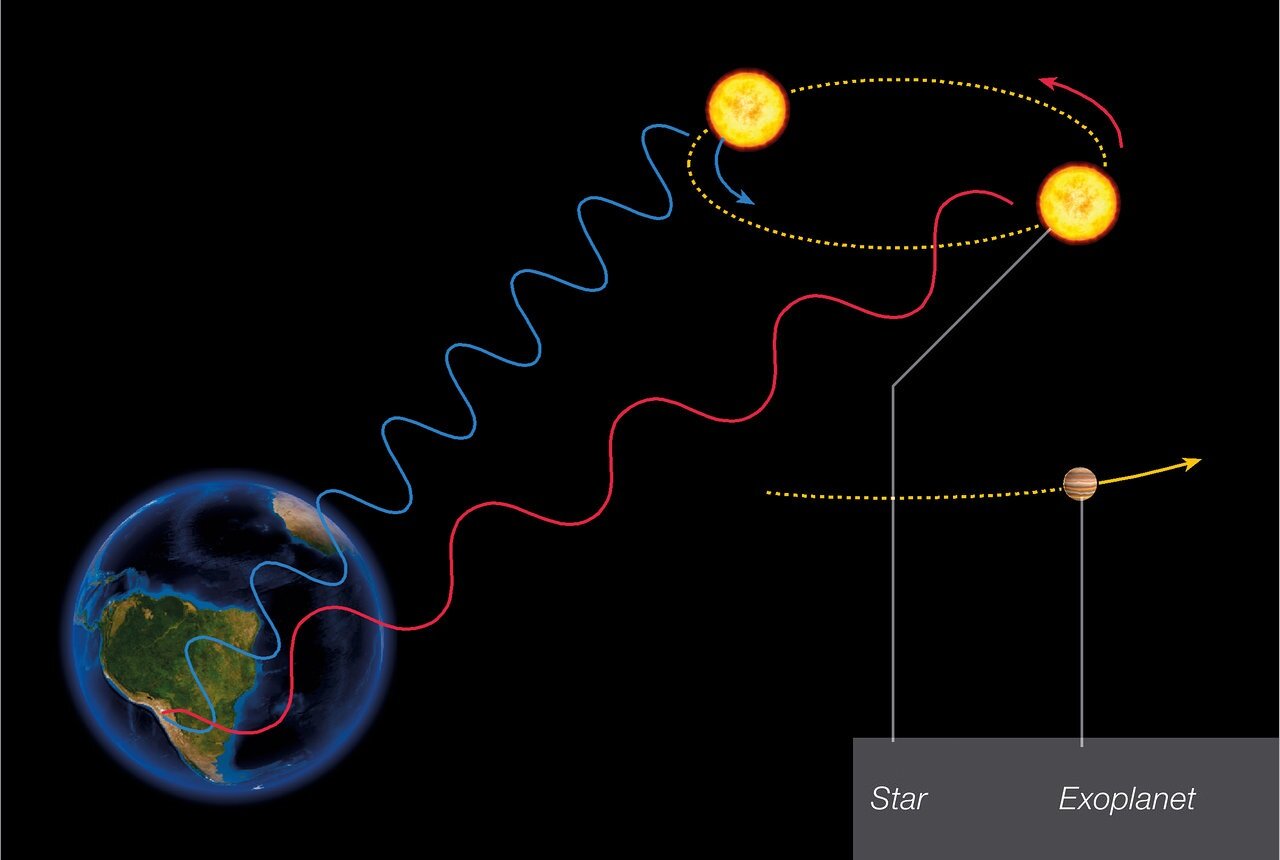Astronomers took a look at three very promising nearby exoplanets using the world's most advanced visible-light astronomical observatory and made some incredible discoveries.
The three exoplanets, similar to those found in our inner-solar system, circle a nearby star called L98-59. It turns out that one of them is only half the mass of Venus (making it the exoplanet with the lowest mass ever measured using radial velocity detection). The second planet turned out to be an ocean world, and the third planet orbits its host star within the habitable zone.
These findings may yet be another important step in the search for extraterrestrial life!
The L 98-59 planetary system is one of our close neighbors at a distance of only 35 light-years away
(Credit: ESO/L.Calçada/G. Hüdepohl (atacamaphoto.com)/spaceengine.org)
Habitable zone
A few years ago, astronomers discovered three planets orbiting nearby dwarf star L 98-58. It has been known that these planets share similarities with the innermost planets of our own solar system. But what kind of planets these were exactly, researchers did not know.
Now, researchers succeeded in uncovering new insights into these fascinating worlds using the European Southern Observatory's Very Large Telescope,
Not only is L 98-59 very close to us (at a distance of only 35 light-years), one of its exoplanets appears to be orbiting its host star within the habitable zone. According to María Rosa Zapatero Osorio, an astronomer at the Centre for Astrobiology in Madrid and one of the researchers, it may have an atmosphere that could protect and sustain life making L 98-59 is an attractive target for future observations.
Ocean world
The detection of biosignatures on an exoplanet depends on the ability to study its atmosphere, however, today’s telescopes are not powerful enough to achieve the resolution necessary to do this for small, rocky planets like those found in L 98-59
Nonetheless, using ESO's VLT, the researchers managed to determine that the three exoplanets may be harboring water. The two planets closest to the parent star are likely arid worlds but may contain small amounts of water. The third planet could be as much as 30 percent water by mass, which could make it an ocean world.
This infographic shows a comparison between the L 98-59 exoplanet system (top) with part of the inner Solar System (Mercury, Venus, and Earth), highlighting the similarities between the two.
Image Credit: ESO/L. Calçada/M. Kornmesser (Acknowledgment: O. Demangeon)
An exoplanet with only half the mass of Venus
In addition, the researchers determined that the innermost exoplanet is only half the mass of Venus, making it the lightest exoplanet ever to be measured using the radial velocity method of exoplanet detection (also known as Doppler spectroscopy).
Exoplanets can be detected by determining the 'wobble' in their host star's motion caused by the gravitational pull of a planet as the planet and star orbit around a shared center of mass. When viewed from a distance, the star appears to move towards and away from the observer. These movements can be measured with the use of the doppler effect. (The light from a star appears slightly bluer when it is moving towards the observer and slightly redder when it’s moving away.)
Detecting small exoplanets is extremely difficult but at the same time very important as these are the types of planet where life as we know it is the most likely.
Stars wobble owing to the gravitational pull of (unseen) exoplanets. When the star moves towards us, its light is blueshifted, whereas it is redshifted when it moves away from us.
(Image Credit: ESO / Edited for clarity by Universal-Sci)
Even more intriguing exoplanets
On top of all this, the team may have found two additional "hidden" exoplanets that had not previously been spotted in this planetary system. They discovered a fourth planet and suspect there is also a fifth at the right distance from the star for liquid water to exist on its surface.
Potential future studies using ESO's Extremely Large Telescope
The team hopes to further study the promising L 98-59 system in the future with the help of the upcoming James Webb telescope and the Extremely Large Telescope (currently under construction in the Atacama Desert).
The latter is unlikely to be finished before 2027 but is ideally suited for exoplanet research as it may be powerful enough to study the atmospheres of some of the exoplanets in the L 98-59 system.
Altogether we live in exciting times when it comes to exoplanet discoveries. We, for one, are very excited about future research into this captivating star system. As always, we'll keep you updated!
In the meantime, be sure to check out the research paper listed below for further information on the current findings.
Sources and further reading:
If you enjoy our selection of content, consider subscribing to our newsletter
FEATURED ARTICLES:











